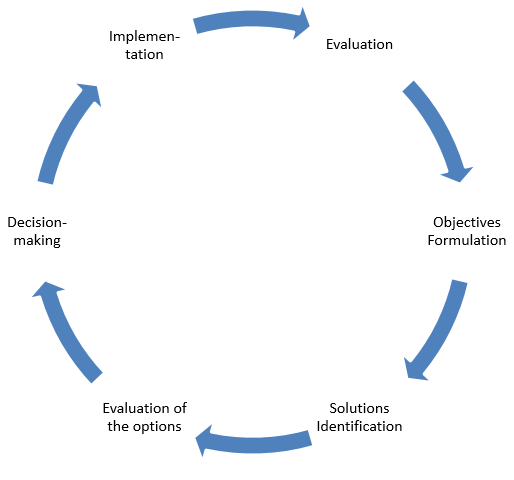Briefly discuss the term ‘educational policy’; identity and briefly explain five characteristics of a good educational policy within a given context. (5 marks)
The term ‘policy’ can be defined in multiple ways, but here, we will consider one of them. According to UNESCO (2013), educational policy is the set of key goals and priorities that the government intends to achieve or pursue education. It is apparent that this definition presupposes the creation of a plan to achieve the goal; also, the priorities can be viewed as the values to be maintained, and UNESCO (2013) states that policy is aimed at resolving an issue.
UNESCO (2013) considers the national policy, therefore, the national government is meant in their paper, but the international UNESCO educational policy can be described with the same words. Also, UNESCO (2013) defines the key characteristics of a ‘good’ policy, and they include being evidence-based (that is, based on research that is carried out before the decision-making), feasible politically (concerning the national and international realia) and financially (concerning naturally limited resources), agreed on by the relevant stakeholders (including politicians), and goal-appropriate (that is, capable of facilitating their achievement).
List six (6) main activities in policy development in education and discuss how two of these can be carried out in a given context. (5 marks)
The main activities of policy development can be illustrated by Fig. 1.

UNESCO (2013) states the need for the consideration of the context of the policy developed or implemented since the environment tends to have multiple impacts on it. For example, the process of evaluation can be carried out in numerous ways that may or may not be suitable for a particular context. A SWOT analysis can be used for the policy of an educational institution, especially if it competes with other ones, which is common for universities (Chang 2013, pp. 24-25). Also, SWOT can be used as a complementary tool for other instruments of analysis, including the problem analysis that will be employed if the policy-makers are resolving an issue (Chang 2013, pp. 23). To sum up, the evaluation stage can be carried out with the help of different tools that are defined by the context.
The planning stages are very context-dependent, and it is especially true for the evaluation of the options. The criteria of ‘good’ policy enumerate several context considerations. For example, a national education policy-makers need to consider the legislation of the country, its specific needs, resources, and culture. An option that is incompatible with Islam will never be accepted in the UAE. Similarly, the Middle East may still be somewhat behind the expectations concerning the equipment of institutions (including universities), which poses restrictions for current options evaluation and also can be regarded as another issue for the legislators to resolve.
Identify three (3) approaches to policy development and briefly explain how one of these can be (is) applied in educational policy development, highlighting the key strengths and weaknesses in each. (5 marks)
The models of policy development can be united into three sets that include stage, fluid, and mixed approaches. An example of the first approach is the linear model that describes the process as a set of stages that follow one another. They involve identifying the need for policy, defining and evaluating alternatives, determining and applying the policy, and (optional) deciding if the goal was achieved and if the policy was successful (Bell & Stevenson 2006, p. 16).
It is a valid problem-solving model that is legitimately popular, but it appears to be an ‘ideal’ version of policy-making while the process might be less linear. The models that took this aspect into account belong to the fluid approach (garbage can model and incrementalism). These models highlight the fact that it is typically complicated and intricate; incrementalism also insists that most policy changes are gradual (Bell & Stevenson 2006; Cohen, March, & Olsen 1972).
However, it is apparent that this approach is also devoted to an extreme; in this case, the sheer possibility of a simple aim and simple decision (as well as a radical one) is being rejected. The third approach attempts to mix the previous two, and does so by suggesting that there are micro- and macro-levels that correspond to linear and fluid decision-making. The third approach combines the advantages of the two other ones, which implies that it is the most comprehensive. However, in respective contexts, other approaches can be a more suitable suggestion.
Reference List
Bell, L & Stevenson, H 2006, Education Policy, Routledge, New York.
Chang, GC 2013, National Education Sector Development Plan: A result-based planning handbook, UNESCO, Paris.
Cohen, MJ, March, P, & Olsen, J 1972, ‘A Garbage Can Model of Organizational Choice’, Administrative Science Quarterly, vol. 17, no. 1, pp. 1-25.
UNESCO 2013, UNESCO Handbook on Education Policy Analysis and Programming, UNESCO Bangkok, Bangkok.